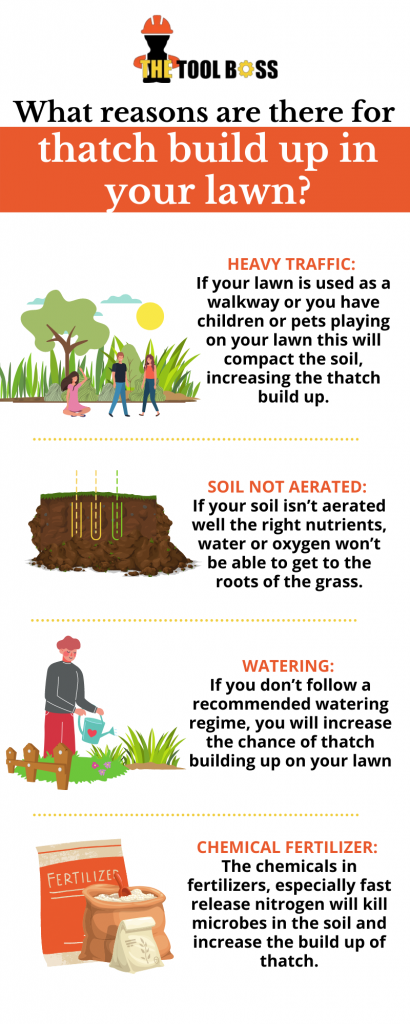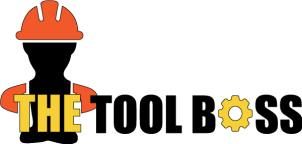A lawn is the pride and joy of any garden, and you want to be able to show it off, so it should be thick, lush and vibrant green—not yellowy-brown with a matted mess of dead grass, roots and stems.
If your lawn is like this, it needs dethatching to get it back to its best.
You get rid of the dead grass and debris by dethatching, and this will restore your lawn and get it looking strong and healthy for the months ahead.
It can be a long and arduous process to dethatch the entire lawn, and you need to do it at the right time. The question many people ask is; when is the best time to dethatch your lawn?
When you dethatch your lawn, you are stripping it back to basics. Starting from scratch allows your lawn to fully rejuvenate and get water, oxygen and the nutrients it needs straight to the roots of your grass.
We’ll let you know about dethatching and when is the right time of year to do this to get the absolute best results.

Here, we’ll cover:
- What Is Dethatching a Lawn?
- How Often to Dethatch the Lawn.

What Is Dethatching a Lawn?
Thatch is a naturally occurring element of living turf, and you find it on many lawns. It’s caused by many intermingled and matted layers of stems, grass roots, leaves and other organic debris.
A thatch layer is usually prevented by natural microbes that occur in your lawn.
If thatch occurs, it could be that you have over-fertilized the lawn, and the grass is growing too quickly for the microbes to break down the old grass and debris that already exists on the lawn. This is when you’ll get the accumulation of thatch.
Too much thatch and your lawn can become susceptible to lawn diseases. It will also reduce its tolerance to extreme weather conditions such as drought, heat and cold.
As thatch develops, it restricts the growing grass roots from getting the water, oxygen and nutrients required for average growth.
The roots will then grow from the thatch rather than the earth below, as this is their only chance of survival.
If the thatch layer is thick, you will need to dethatch to remove it from your lawn. You can sometimes do this by simply using a rake. Push the rake deep into the grass so that you get the whole layer of thatch.
Rake the entire lawn, removing the thatch as you go.
If you have a large lawn or a much thicker layer of thatch, a power rake, scarifier or mechanical dethatcher is best.
Using a motorized tool will clear the thatch layer much quicker and more thoroughly than a manual rake.
A power rake will strip your lawn back to basics, so it’s essential to do this at the height of the particular grass’s growing season. This will give your lawn the best chance of recovery in the shortest amount of time.
Assessing Your Thatch Layer
Different types of grass will produce varying levels of thatch, and there are some grasses out there that don’t produce any thatch at all.
The best time to rid your lawn of thatch will vary, depending on which type of grass you have. Cool-season grasses will start to grow earlier than warm-season grasses.
As mentioned, you should always dethatch your lawn during the growing season to give it time to recover and grow strong. This would be early spring or early fall for cool-season grasses and late spring through early summer for warm-season grasses.
How Much Thatch is Too Much?
It’s sometimes good for a lawn to have a small amount of thatch, as it can protect your grass from extreme heat. It will also help to keep moisture in the soil and grass roots, preventing weeds. It’s only as the thatch layer gets thicker and excessive that thatch becomes a problem.
Once it becomes one inch thick or more, it will start to deprive your grass roots of the moisture and air that they need to become strong and healthy. It will also stop any nutrients from getting to the roots of your grass through the compacted soil.
A thick thatch layer will also increase the risk of lawn diseases and insect infestations, which no one wants.
You can tell if your thatch buildup has become an issue without measuring it. Your lawn will feel spongy when walking on it, and your lawn mower will sink into the thick thatch. The texture will make it more difficult to cut your lawn and won’t give you the ideal grass height.
Try poking your finger through the soil surface. If you find that it’s too hard to get through, it’s time to get dethatching.
If you have a layer of thatch that’s over one and a half inches thick, the best option is to rip up the turf and start again, laying a new lawn.

How Often to Dethatch the Lawn
Your entire lawn should be dethatched at least once per year. Doing it once is enough for most lawns, and some are lucky enough not to need dethatching at all. However, some other lawns may need to be dethatched twice.
If you’re one of the unlucky ones that need to do it more than once. You should make sure that the second dethatch is done while the lawn is still growing, to allow it to recover before the dormant seasons.
There are several reasons why thatch appears in some lawns and not others:
- Soil is not aerated properly — This means that there is very little oxygen getting to the compacted soil and poor drainage for the water to get to the roots of the grass. The answer to this would be lawn aeration.
- If your lawn has heavy traffic — It could be that it’s treated as a walkway, or children and pets are playing on the lawn. The soil will be compacted, meaning that nutrients can’t get through. This is especially bad in areas with heavy clay soil.
- Not watering correctly — If you don’t water your soil enough, water it too frequently, or give it too much water. An incorrect watering regime can increase the chances of thatch building up on your lawn.
- Adding chemical fertilizers to your lawn — The chemicals in fertilizers can increase the buildup of thatch. This is especially so with fertilizers containing fast-release nitrogen. Synthetic fertilizers contain salt based nitrogen and this will kill the microbes in the soil that prevent thatch.
- Poor lawn care — If you mow your lawn infrequently and mow it too short, this increases the chances of a thick thatch buildup. You should mow more often but leave it at a medium height of 2-4 inches, and care for it properly.
Dethatching your lawn is necessary for many homeowners and should be planned into your gardening calendar once per year.
This will make sure that you keep on top of any issues, and you don’t get an excessive buildup of thatch.
Can Dethatching Harm the Lawn?
Thatch can be beneficial to your lawn when appropriately controlled. If you have less than half an inch of thatch, this will help to keep your lawn cool and keep it moist, stopping weeds from appearing.
You need to remember that dethatching your lawn will strip it back and may also damage the turf. It will pull and tear at dormant turf, which is why it’s better to do it during the growing season. This enables your lawn to recover as it’s strong and still growing.
Be careful when using a mechanical tool to dethatch your lawn, as they can bring up weeds, such as crabgrass and other weed seeds. These will then spread throughout your lawn, causing a whole heap of different problems and creating an infestation of weeds that you just don’t need.

Conclusion
Thatch can have both positive and negative implications for your lawn, but we generally just hear about the negatives. But a small amount of thatch can protect your grass from extreme heat and help to keep moisture in the soil and grass roots, preventing weeds.
If thatch is a problem in your lawn, you need to dethatch before it causes damage and kills off the lawn.
It’s possible to control the buildup of thatch on your lawn with proper lawn care. Make sure that you mow your lawn to a medium height and not too short, about 2-4 inches. It may be tempting to go shorter to reduce mowing so often, but resist—it’s not a good thing to mow your lawn too short.
Water the lawn properly, don’t give it too much water and flood it, or too little and too shallow, so as the water won’t get to the grass roots.
If you have a layer of thatch that’s over one and a half inches thick, the best option you have is to rip up the turf and start again, laying a new lawn.
There are a few more processes that you can undertake to ensure a healthy life for your lawn. This includes aeration and overseeding at the right time, as well as weeding and feeding at the right time of year.
We hope that you’ve found our guide helpful in your quest to understand more about thatch. With a little bit of tender loving care, you will have a thatch-free lawn that looks lush, vibrant and healthy.
